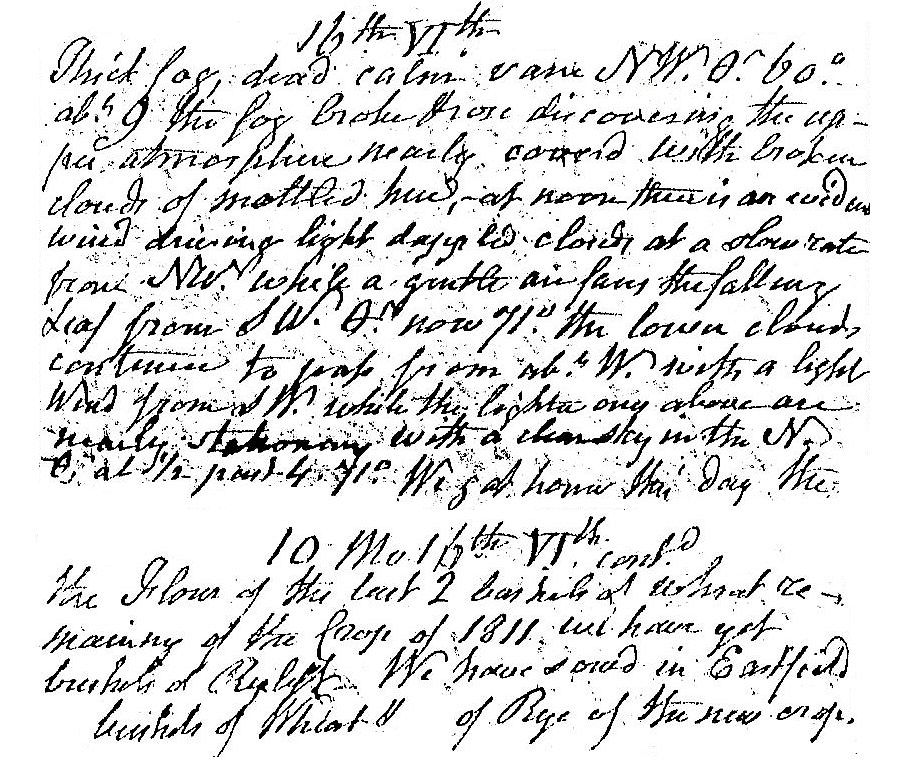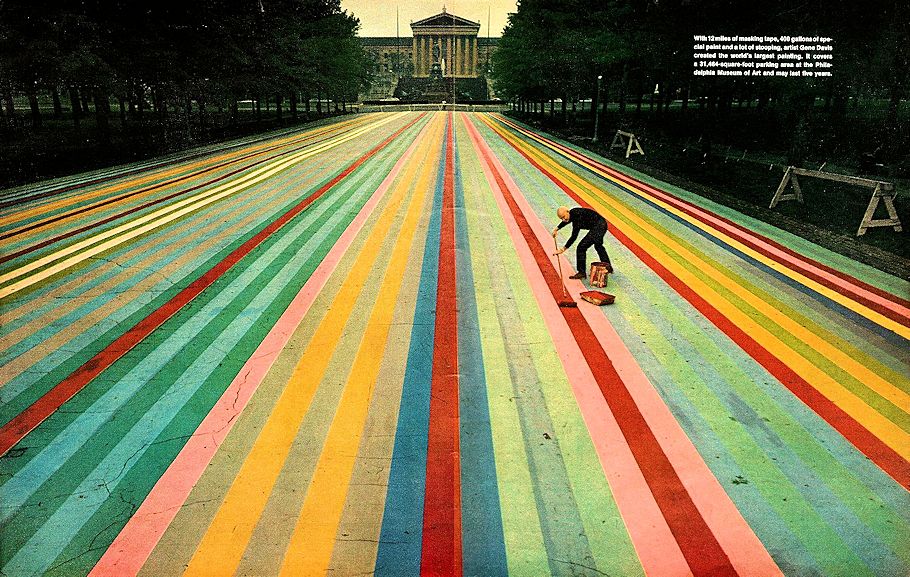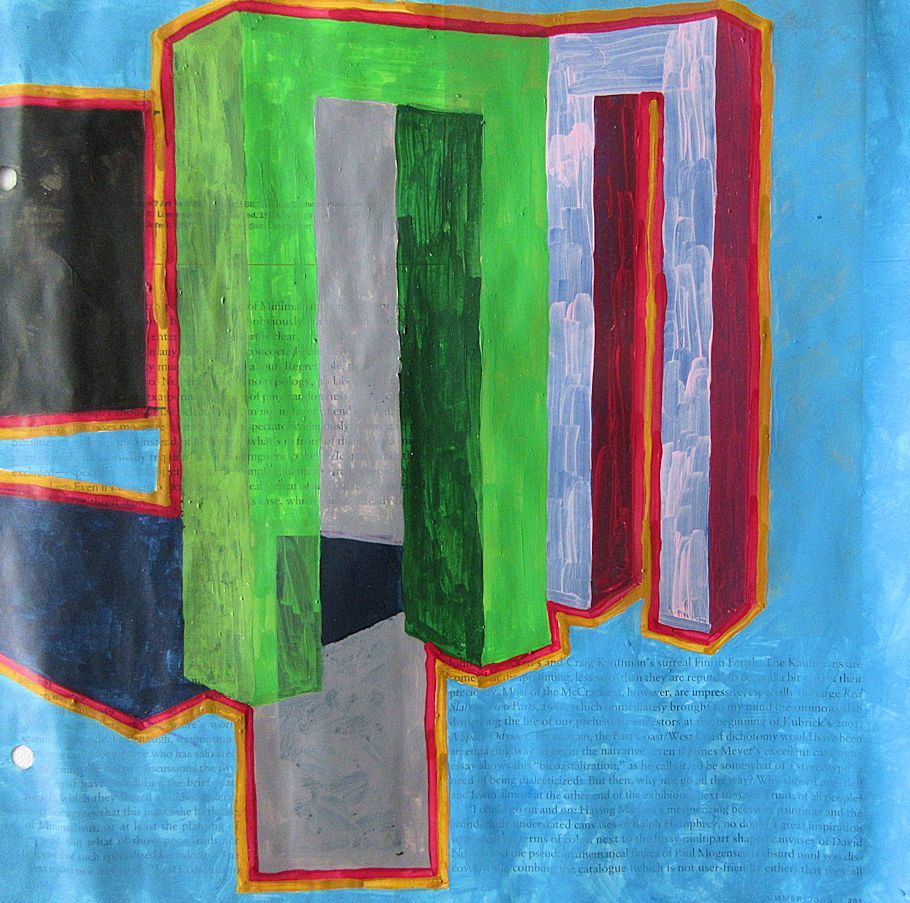16 October 1778 Friday
He asks himself, "Why on Earth did we erase the circuses within the Ichnographia Campus Martius? Why didn't we just leave them alone?"
16 October 1812 Friday

Thick fog, dead calm, vane NW, temperature 60°. About 9 the fog broke and rose discovering the upper atmosphere nearly covered with broken clouds of mottled hue. At noon there is an evident[?] wind driving light dappled clouds at a slow rate from NW, while a gentle air fans the fallen leaf from SW. Temperature now 71°. The lower clouds continue to pass from about W with a light wind from SW, while the lighter ones above are nearly stationary with a clear sky in the N. Temperature at 1/2 past 4 71°. We got home[?] this day. The flour of the last 2 bushels of wheat remaining of the crop of 1811. We have yet bushels of rye[?] left. We have sowed in east field bushels of wheat and of rye of the new crop.
16 October 2000
baroque (cyber?) theater
The following is a passage I first read over 23 years ago. It comes from Timothy K. Kitao, Circle and Oval in the Square of Saint Peter's: Bernini's Art of Planning (New York: New York University Press, 1974), pp.22-23. I was reminded of this passage after some reflection upon the recent bit of cyber theater that occurred here a month and a half ago.
"In the well know production of the Due Teatri, first given in 1637, Bernini developed a simulated amphitheater of a very elaborate kind. This is, of course, the best known of Bernini's theatrical works, but a recapitulation is in order.
According to Massimiliano Montecuculi, who witnessed the performance, the stage was prepared with "a flock of people partly real and partly feigned" so arranged that, when the curtain had fallen for the opening of the play, the audience saw on the stage another large audience who had come to see the comedy. Two braggarts, played by Bernini himself and his brother Luigi, then appeared on the stage, one facing the real audience and the other the fictitious; and recognizing each other in no time, they went on to claim, each in turn, that what the other saw as real was actually illusory, each firmly convinced that there was no more than one theater with its audience in that half he was facing. The confusions of realities in mirror image thus heightened, the two firmly decided "that they would pull the curtain across the scene and arrange a performance each for his own audience alone." Then the play was performed to the real audience, that is, the main act to which that preceded was only a present prelude. But through the play another performance was supposed to be taking place simultaneously on the second stage introduced by Luigi; the play was, in fact, interrupted at times by the laughter from those on the other side, as if something very pleasant had been seen or heard.
At the end of the play, the two braggarts reappeared on the stage together to reaffirm the "reality" of the illusion. Having asked each other how they fared, the impresario of the fictitious performance answered nonchalantly that he had not really shown anything but the audience getting up to leave "with their carriages and horses accompanied by a great number of lights and torches." Then, drawing the curtain, he displayed the scene he had just said he had shown to his audience, thus rendering complete the incredible reversal of reality and illusion to the confused amazement of the real spectators, who were now finding themselves ready to leave and caught in the enchanting act of feigning the feigned spectators."
16 October 2002
art and architecture 30 years ago

The world's largest painting--Franklin's Footpath--by Gene Davis on the parking lot in front of the Philadelphia Museum of Art--31464 square feet, 12 miles of masking tape used, 400 gallons of special paint. As predicted, it lasted about 5 years. I fondly remember walking over it often. Oh boy, now I'm dreaming reenactment.
16 October 2007
Differentiation between the outside and the inside.
"trying to mix the two gently"
osmosis
1a. the tendency of a fluid, usually water, to pass through a semipermeable membrane into a solution where the solvent concentration is higher, thus equalizing the concentrations of materials on either side of the membrane.
1b. the diffusion of fluids through membranes or porous partitions.
2. a subtle or gradual absorption or mingling
[working title:]
The Semipermeable Membrane of Architecture
2002.09.30:
When I first visited the house [Shofuso] in 1975 it was one of those places (in Philadelphia) that was rarely visited. There was a young 'hippie-ish' tour guide 'working' there then, and he admitted to spending most of his time there completely alone. He said he loved it though, especially on rainy days because that's when he opened up the entire wall of the house that faced the lake/pond in the garden, and then sat in the middle of the main room's floor "taking it all in."
16 October 2021

16 October 2023 Monday
After spending the better part of two hours this morning having tea with Ro and Steve at their place, I now know why the notion of "having tea" is easily one of the best of pleasurable rituals. There wasn't even a moment when one of us wasn't saying something. Maybe there was something extra in the tea, because it was all music to my ears...LOL Plus, I got to see Steve's latest man cave. As far as I'm concerned, Steve is one of the guys that actually invented man caves since he already had one in his parent's basement 50 years ago. That one embodied the whole Warhol Factory vibe, where as the latest embodies a pure golden memories vibe.
|